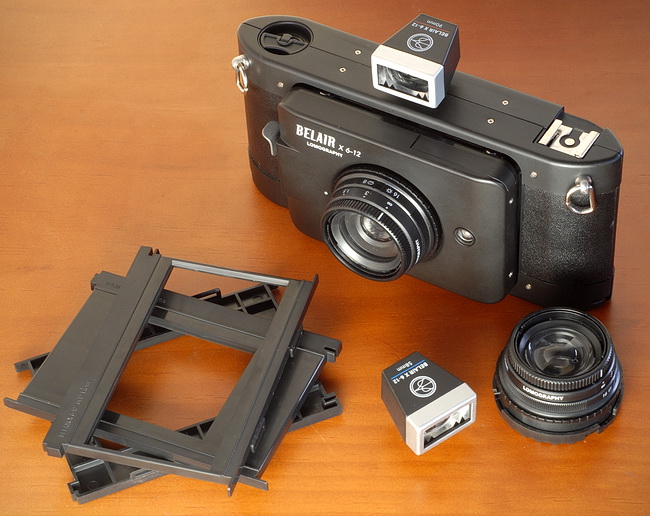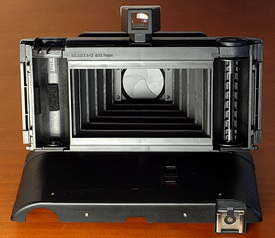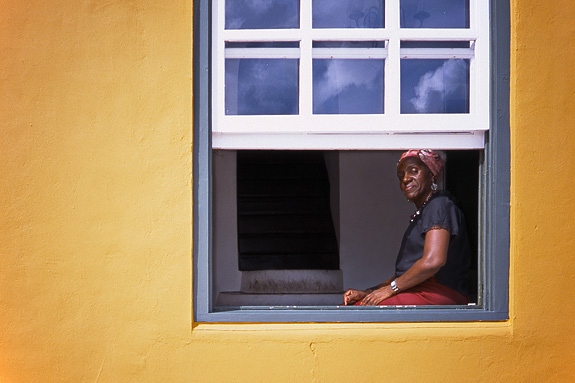With film photography now largely a niche pursuit, the announcement of a new film camera is usually met with a mix of surprise and excitement. But even still, the unexpected arrival of the Lomography Belair X 6-12 sent tremors through the film community. Within days of its unveiling, the “I Shoot Film” Flickr forum spawned a thread jammed with several hundred messages expressing reactions that ranged from unbridled delight to cynical condemnation. Clearly the Lomography people had struck a nerve. And it’s easy to see why. Even after you strip away the layers of seductive hype and hyperbole that seem to cling to every Lomography product, the Belair is potentially a remarkable photographic instrument.

The Belair comes with three format masks (6x6, 6x9, and 6x12)and two plastic lenses (90mm and 58mm, both f/8) each with its own viewfinder.
At its core, the Belair is a plastic-bodied, aperture priority, multi-format, interchangeable-lens, folding camera that takes 120 film. Best of all, it comes with two lenses and was on offer at an introductory price of $175 Canadian. If that doesn’t get your film-loving heart beating a little faster, I don’t know what will. But I had a number of big concerns and questions that the various Lomography web sites didn’t address. First, would the plastic lenses be of reasonable quality? Second, would the camera be a competently made shooter, or a cheap, light-leaking toy? There was only one way to find out, so I ordered one.
I chose the “Cityslicker” version partly because it was the least expensive, but also I because I just like black cameras better. It also weighs 50 grams (2 ounces) less than its aluminum-clad sibling, the “Globetrotter.” Indeed, the Belair is the lightest medium-format camera in my collection — at 454 grams (16 ounces) including lens and finder, which means it’s not even half the weight of my Yashica-Mat TLR. And less is more if you’re wearing your camera all day.

The Belair's rarely seen underside. The silver button near centre releases the bellows mechanism. The metal tripod socket is at far right.

The camer's bellows are made of a rubbery material that looks as if it should hold up well. The entire back of the camera comes off to make loading the film and changing the format masks an easy task.
Before I go any farther, let me just say up front that I’m a Lomography agnostic. I’m neither especially fond of the blurry/vignetted/cross-prosessed aesthetic, nor am I hostile toward it. It’s not my thing, but to each his/her own. A quick perusal of this web site will show you the kinds of pictures I like, and so I evaluted the Belair in terms of how well it lets me create images like these. As always, your mileage may/should vary. While I place a good deal of importance on things like image sharpness and fidelity, you may not. And that’s cool with me. Also, I won’t go into a detailed list of the features and specifications — there are lots of places where you can get that info on-line, not least, from the Lomography website. What I do want to leave you with is a sense of how the camera handles and whether or not it’s likely to be a suitable tool for the kinds of pictures you want to take.
In some respects, you can make a first-order assessment of the Belair on specifications and features alone. Visit the Lomography web site and give the information there a careful look. Does an auto-exposure, medium-format camera with limited shutter speeds and aperture settings sound like it would work for you? If not, my impressions and results, good, bad, or indifferent, won’t really matter much.
In early-December, I recieved my camera, which according to the “Certificate of Authenticity,” is #29 of 800. Out of the box, the Belair Cityslicker certainly looks the part of a serious camera, but the illusion is to some extent shattered the moment you handle it. Although the faux leatherette covering is comfortable to grip, the camera as whole feels cheap. Some of that is the aforementiond lightness and a certain amount of creakiness, but it’s also the impression left by the fact that there is so much plastic. Really, the only metal parts are the back plate of the lens board, the folding mechanism, shutter release lever, the tripod socket, and the strap lugs. But it’s important to note, that none of these things in and of themselves mean the camera won’t work well. I’m just saying, that if you enjoy the precision feel of a finely made German camera, you’re not likely to be impressed by the Belair Cityslicker.
Did you find this article interesting or helpful? If so, consider using this link the next time you shop at Amazon.com. Better yet, bookmark it for future use. Thanks to Amazon’s associates program, doing so costs you nothing yet helps keep this site up and running. Thanks!
To continue to Part 2, click here.


 Subscribe with RSS
Subscribe with RSS








